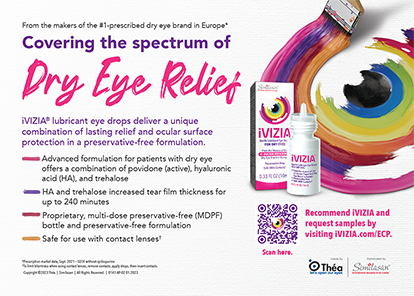

As most readers know by now, the relationship between a medical practice and a private equity (PE) firm is largely transactional. From the PE firm’s side, it is based almost solely on how much in contributed earnings a practice generates before the transaction and can continue to generate. For the selling doctors, it’s all about how much gets paid and when.
In the typical PE partnership transaction, the consideration paid to the MD-owners is about double the amount that would typically be paid in a doctor-to-doctor transaction, which is why it is such an appealing option for many physicians.
So, what can your practice do to optimize and best prepare for a PE deal?
WHAT PE FIRMS VALUE
PE firms assess and value profit margins above all. There are other bases for a PE firm’s scoring of a practice, including the stability and quality of its earnings, the variety of services the practice offers, expected doctor tenure, the scale and geographic diversity of the practice, and how the practice fits with other aspects of the PE firm’s operations within the region. But the most important criterion is whether or not the practice makes enough profit to offset the cost of the original transaction and to cover the costs of operation endured by the PE firm—with significant profit left over for the PE firm to book as a return on its investment.
Many physicians who haven’t closely investigated PE misunderstand the mechanisms of these deals, particularly with regard to the earnings multiple—the multiple of the available profit after physician compensation paid to the practice owner by the PE firm. For a more detailed explanation of this concept, see The Earnings Multiple.
The Earnings Multiple
The earnings multiple is an often-misunderstood term among physicians who are not familiar with private equity (PE). Some physicians think that the earnings multiple is applied to the total profits of the practice, inclusive of doctor take-home pay and draws. In reality, however, the earnings multiple is applied to the available profit after physician compensation.
Let’s say you are the owner of a solo private practice with $1 million in collections and $600,000 in expenses. This practice would have $400,000 available for profit—a 40% margin. As a private practice owner, the entirety of that $400,000 profit would go to you.
If you were to sell the practice to a PE firm, the earnings multiple would be applied only to the amount of profits remaining after you have been compensated for your labor at fair market rates. A common approach is to pay the former owner-physician 30% of their personal collections. Based on this example, you would be paid $300,000 in compensation, leaving $100,000 in undistributed profits. If you were to sell this practice to a PE firm, the earnings multiple (anywhere from five to nine times earnings) would be applied only to that remaining $100,000.
The example described in The Earnings Multiple illustrates the most important way a practice can prepare for a PE transaction, which is by increasing total profits and—most important—increasing the profit margin. Practices that have profit margins of under 40%, for example, would have less profit remaining after the physician-owner has been paid 30% than a practice with a higher profit margin.
Practices that have lower profit margins, let’s say under 30%, have a harder time being of interest to PE, unless the PE firm believes that it can materially boost profitability after the transaction. A PE firm would be interested in a practice with a low profit margin if, for example, that practice sees 500 surgical cases per year but does not own an ambulatory surgery center (ASC), and those surgical cases could be brought to an ASC already owned by the PE firm.
HOW TO ENHANCE PROFIT
A practice’s profit margin can be improved in the usual two ways: by increasing revenue or by decreasing expenses. For a largely fixed-cost business like eye care, profit enhancement is more a matter of revenue enhancement than cost containment.
If a practice owner wanted to improve profitability by $100,000 per year, they could do so by either enhancing revenue—by, for example, seeing three more patients per clinic day—or by containing cost—by firing two staff members. From this oversimplified example, you can see how seeing a few more patients would be much more feasible.
To be more attractive to PE firms, your practice should focus mostly on revenue enhancement to increase your profit margin.
NETWORK
Another thing that you can do to prepare your practice for PE is to stay in close contact with larger practices in your area that have already partnered with a PE firm or on the verge of doing so. The average practice in the United States includes only one to three doctors—not the kind of practice at the top of the interest list for PE firms. Practices of this size are often termed tuck-in or fold-in practices because they are typically only transacted with after a large, so-called beachhead practice in the area has been secured by the PE firm.
For example, a PE firm might acquire a $25 million practice in a given area and then go on to acquire smaller nearby practices to fold into the firm’s emerging regional eye care system.
If one of these large practices is located near yours and your practice is of a scale that makes it potentially attractive as a tuck-in practice, stay close to the medical and administrative leaders of that large practice. They will be in the best position to talk up your prospects to the PE firm.
LOOK BEYOND THE NUMBERS
When preparing for PE, it is important to know what’s in your heart as a physician, putting aside business considerations, because you are potentially going to lose a degree of control over your day-to-day clinical life. You’ll be taking instructions from someone else who now owns the practice. Some doctors take to and can adjust to that arrangement very easily; others resist strongly.
Don’t just look at the numbers of the deal. Consider the personal implications and how you think you will adapt, going from the independence of being a practice owner to being dependent upon the authority of another party.
THE COVID-19 FACTOR
Most physicians considering a PE deal until recently were doing so mostly for the financial benefits and especially the prospect of topping up retirement savings. In a post–COVID-19 world, however, the typical PE deal may be less generous. The entire profession, including our colleagues on the PE side of the aisle, have learned painfully that ophthalmic earnings are not invincible. PE firms are likely now to raise their standards for the quality of earnings in target practices. This means that, going forward, the pot of gold for sellers at the end of the PE rainbow is not going to be as big as it was before the pandemic.
On the other hand, many physicians are now taking into consideration the intermediate and long-term security associated with having a PE partner with better access to capital for emergency situations such as a pandemic. It may be that financial security will now be elevated as a motivation for practices to partner with PE rather than just a cash windfall.




